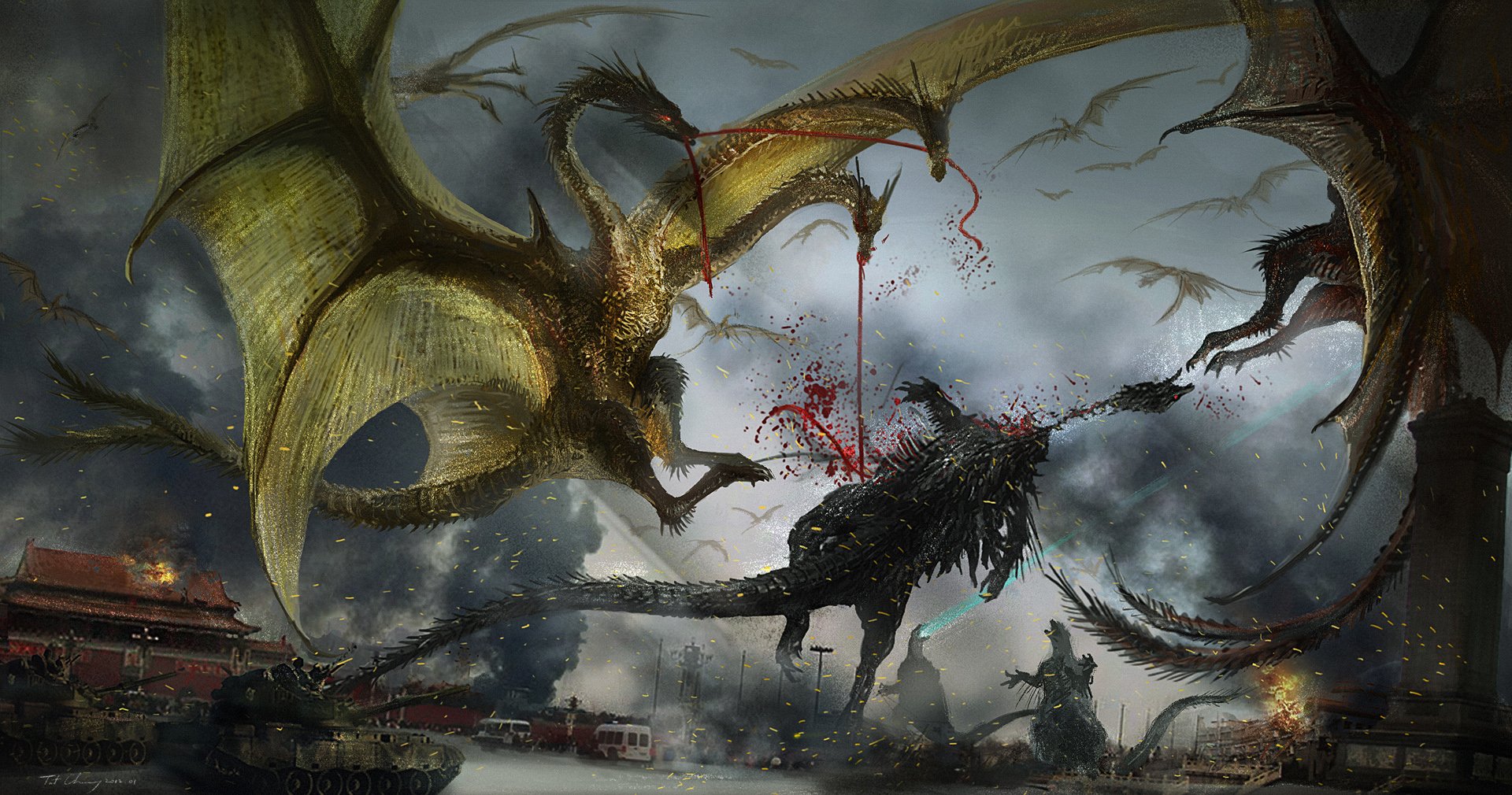Remember that ominous, pulsing red sky? The heart-stopping roar of three heads, the fear that gripped your very soul as you watched a terrifying leviathan descend from the clouds, its very being a symbol of chaos and destruction? For fans of the golden age of Japanese sci-fi cinema, the sight of King Ghidorah, the three-headed dragon, is a moment etched in cinematic memories.

Image: www.imdb.com
The year was 1964. Japan, still reeling from the devastation of World War II, was beginning to find its footing in a world that was rapidly changing. This was also the year that Toho Pictures released a film that would forever alter the landscape of kaiju cinema: “Ghidorah, the Three-Headed Monster.” This film wouldn’t just be another monster movie, it would be a breathtaking visual spectacle, a philosophical exploration of humanity’s relationship with nature, and a heart-pumping adventure that would leave audiences on the edge of their seats.
A Tale of Two Monsters, a Cosmic Menace, and a Planet’s Fate
At the film’s heart lies a battle for the very soul of Earth. We are introduced to Godzilla, the iconic king of the monsters, and Rodan, the giant flying Pteranodon. While Godzilla’s presence is familiar to audiences, Rodan is a force of nature, driven by a primal instinct to protect his home. But their combined might is no match for the overwhelming power of King Ghidorah, an extraterrestrial dragon sent to conquer our world. With its three heads, each capable of generating devastating bolts of lightning, Ghidorah is a force to be reckoned with. The film explores the terrifying power of this cosmic leviathan, a creature that evokes fear and awe in equal measure.
The film’s narrative sets the stage for a battle of epic proportions. The sheer scale of the creatures, the destruction they unleash, the heroic sacrifices made by those who face them – all combine to create an unforgettable cinematic tapestry.
The Director’s Vision: A Symphony of Destruction and Hope
“Ghidorah, the Three-Headed Monster” was directed by Ishiro Honda, a master of the genre who would become synonymous with Japanese monster movies. Honda crafted a film that seamlessly blends epic action with emotional resonance. The destruction wrought by Ghidorah is not just a spectacle; it reflects humanity’s own capacity for self-destruction and the fragility of our planet.
This was a time when the threat of nuclear war loomed large over the world. The film subtly explores these anxieties, with Ghidorah’s power mirroring the destructive potential of nuclear weapons. But Honda also offers a glimmer of hope – the resilience of humanity, its ability to work together to combat a common threat. The alliance of Godzilla and Rodan, initially driven by survival, becomes a symbol of unity against unimaginable odds.
A Legacy of Power, a Tapestry of Cinematic History
“Ghidorah, the Three-Headed Monster” is more than just a giant monster movie; it’s a cinematic landmark. Its impact on the genre is undeniable. Ghidorah, who began as a formidable adversary for Godzilla, has become an iconic villain in pop culture, appearing in numerous Godzilla films and influencing countless other monster movies.
This film is a testament to the enduring power of Japanese cinema, capturing the imagination of audiences worldwide. Its legacy is not just about monsters and destruction, but about the enduring power of storytelling, its ability to confront our deepest fears and offer glimpses of hope, even in the face of unimaginable odds.

Image: wall.alphacoders.com
Ghidorah The Three-Headed Monster 1964 Full Movie
Exploring Further
“Ghidorah, the Three-Headed Monster” is a film that begs to be revisited. There’s a reason this film has become a cult classic. Get ready to be transported into a world where giants clash, where humanity faces its greatest threat, and where the fate of our planet hangs in the balance. If you’re ready for an unforgettable cinematic adventure, “Ghidorah, the Three-Headed Monster” awaits. Let its epic battles, its stunning visuals, and its evocative story captivate you. It’s a journey you won’t soon forget.





